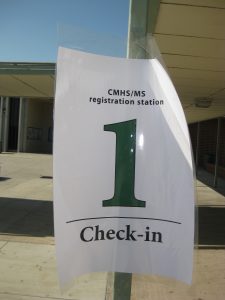5 Advantages of Online Registration
Waste of time and materials can make registration time a nightmare for public schools and school districts. Even smaller charter schools struggle to make registration periods an efficient process for administrators, teachers, parents and students. Online registration is a wonderful opportunity for a school district or a charter school to redirect it’s energy towards the parents and students who need it, while leaving the paperwork aspect of the job in one secure, fast, and convenient location.
Five Advantages of Online Registration:
1. It SAVES TIME! With constant cut backs in education funding, the expression, “Time Means Money??? has never been more true. Valuable school personnel can take the time they are spending on paperwork creation/organization and put it where it belongs – in the service of students and teachers. It’s hard to imagine an office without dozens of paper organizers and stacks of forms to be filed. Online registration takes all of that and puts it onto your computer screen with a few quick taps on the keyboard.
2. Streamlined Paperwork Throughout a District. Online registration allows school districts to create uniform online forms that remain in the system throughout students’ education. This means no more lost files or important medical history forms that use precious time and resources to recover. It also allows schools in a district to use the same format for standardized documents/forms, keeping things simple for parents who may have multiple children in the same school or district.
3. Remote Access to Documents and Information: This is a valuable tool for personnel and parents alike. For parents, they don’t have to hear their children’s, “I forgot it??? or “It’s lost??? when it comes to school forms because they will be able to navigate them online.
4. Multi-Language Translation. Globalization allows districts to benefit from a myriad of cultures and languages. However, multiple translation forms are exceedingly costly. Online registration offers forms that are translated in applicable languages without a district having to create multiple copies.
5. Control of Information Access. Districts can make sure that confidential information is secure while allowing general information to be accessed by a wide variety of users. No more locking file cabinets.


 6. Provide good signage — Have adequate signage so parents know exactly where to go when they arrive. Have signs outside with a copy of the registration form pasted to it with instructions of where to go if they do not have the completed registration form.
6. Provide good signage — Have adequate signage so parents know exactly where to go when they arrive. Have signs outside with a copy of the registration form pasted to it with instructions of where to go if they do not have the completed registration form.


